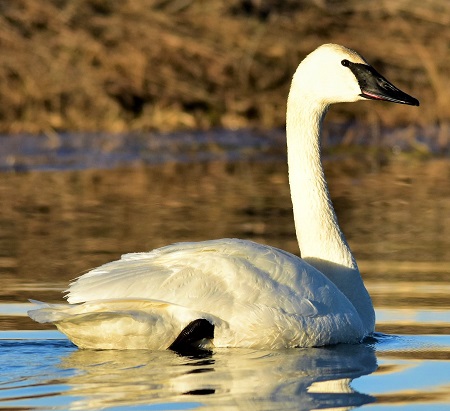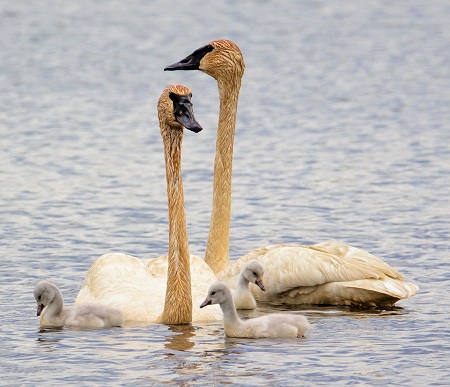Trumpeter Swan
The Trumpeter Swan is the heaviest living bird native to North America. It’s also the largest extant Swan species, with a wingspan that may exceed 3 m. In fact, Trumpeter swans got named after its distinctive, trumpeting, ‘oh-OH’ call.
The Trumpeter Swan is the American counterpart and a close relative of the Whooper Swan of Eurasia. It also resembles the Tundra Swan but it’s much larger and it lacks the yellow spot in front of the eyes, that the Tundra Swan always has. Trumpeter swans are entirely white with black bills, legs and feet.
The breeding habitat of the Trumpeter swan is usually large shallow ponds, undisturbed lakes, pristine wetlands and wide slow rivers. Also marshes in north-western and central North America, with the largest numbers of breeding pairs in Alaska. In the winter, Trumpeter swans migrate to the southern tier of Canada and the eastern part of the northwest states in the United States.
The female Trumpeter swan lays 4 – 6 eggs (up to 9 eggs in some cases), in a mound of plant material on a small island or a floating platform on a clump of emergent vegetation. The incubation period is 32 – 37 days, which is handled mainly by the pen, although occasionally by the cob as well. Trumpeter cygnets fledge at roughly 3 to 4 months, but reach sexual maturity at about 3 to 4 years.
| Place of origin | Northern portions of North America |
| Use | Preservation |
| Weight | Male: 9 – 13.6 kg female: 7 – 10.5 kg |
| Egg color | Dull white |



